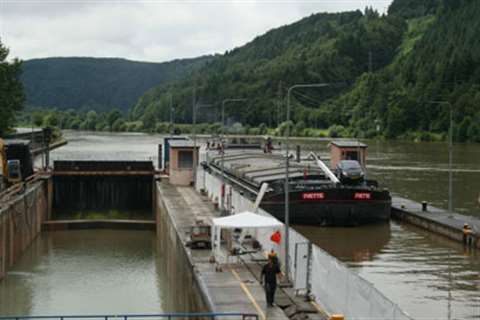Hydrodemolition the solution for lock repairs
03 September 2009

Cracked and poor quality concrete is being removed by hydrodemolition specialist Luckei Betonfrastechnik, based in Bendorf, from the dividing wall of a twin lock structure at Guttenbach on the River Neckar using an Aquajet 1.7 tonne Aqua Cutter HD RA hydrodemolition robot.
The wall dates back to 1939, when the first lock was built, and the damage to the concrete lock walls was so extensive that weight loading was a critical factor when determining the method to be used during the removal of the full width of the 1.2 m (3.9 ft) concrete slab on the top of the central wall.
The robot is removing 400 mm (16 in) of the concrete across the full length of the 100 m (328 ft) wall, with a concrete volume of 280 cubic metres (9,900 cubic feet).
Hydrodemolition techniques will also be used to repair the lock walls. A temporary gate structure has been installed across the upstream end of the lock and water pumped out to allow access to the 9.5 m (31.2 ft) high walls.
Luckei is considering the use of Aquajet's new hybrid robot that offers a vertical reach of 9 m (29.5 ft). Once the damaged concrete is removed and the walls reinstated and strengthened with additional 20 m (65 ft) deep pre-stressed anchors along both sides, new gates will be fitted and it will resume normal service.






